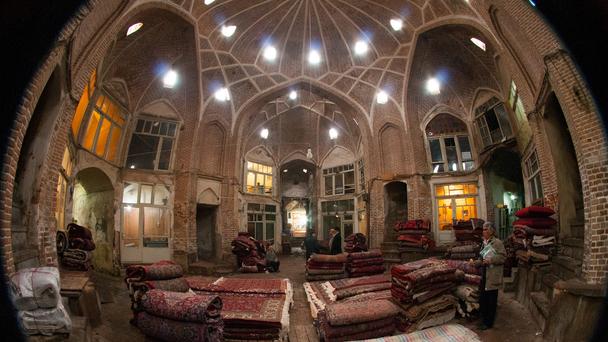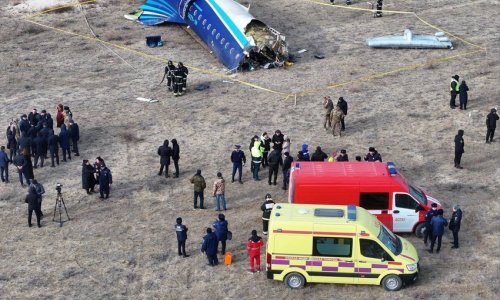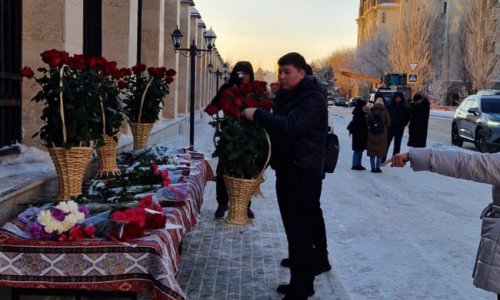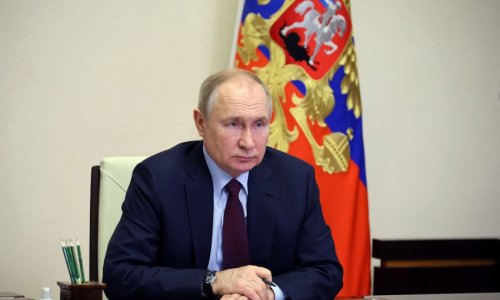Where Iran's past and present intertwine
Outsiders often think of Iran as a cultural monolith – one dominated by Persian culture, language and history. Yet northwest Iran defies that stereotype. Its population is predominantly Azerbaijani, an ethnic group that is mainly Shi’a Muslim, speaks a Turkic language and has a mixed Iranian, Caucasian and Turkic heritage. The region also bears architectural and cultural evidence of the many invasions it has endured over the centuries, including the Arabic Azd tribes from Yemen in the 7th Century, the Mongols in the 13th, Safavids in the 16th, Ottomans in the 18th and Russians in the 19th. Tabriz, the capital of northwest Iran’s East Azerbaijan province, is the country’s fourth-largest city, with almost two million people. Its history – which dates back almost 3,500 years to Iron Age settlements – includes the distinction of being a major commercial stop along the Silk Road trading routes that connected China with Europe. (Audrey Scott)Tabriz Blue MosqueEven after the structure of the Tabriz Blue Mosque was completed in 1465, it took artists 25 more years to finish decorating the interior and exterior with blue majolica (tin-glazed) tiles and detailed calligraphy – signatures of Islamic design and artistry. In a matter of minutes, however, the earthquake of 1773 would lay all of their work to ruins, a state the mosque lingered in for 200 years. The city began reconstruction of the mosque in 1973; while the framework has been repaired, the interior remains a work in progress as craftsmen piece together what once was, including segments of finished tile (pictured). (Daniel Noll)The world’s largest covered marketWith an estimated 5.5km of corridors and trading spaces, the Tabriz Bazaar is the world’s largest covered market. It also is one of the oldest in the Middle East. It is deceptively easy to get lost in the winding brick pathways beneath the vaulted ceilings, through alleys of gold, carpets, dried fruit and footwear. Marco Polo came to the Tabriz Bazaar in the late 13th Century when the city served as a major trading centre on the Silk Road. In recognition of its importance, the Tabriz Historic Bazaar Complex earned status as a Unesco World Heritage site in 2010. (Audrey Scott)The carpet sellersAs local guide Ali Kheshtgar of AITO Tours said: “An Iranian carpet, especially one from Tabriz, is worth more than gold.” The antique carpet corridor of the Tabriz Bazaar felt like a step back into history. In the circular hall of the carpet-selling epicentre, stacks of antique carpets were carefully piled high in arrangements showing off the signs of their quality: high knot count, design complexity and the depth of colour of the natural dyes. Dealers and purveyors spoke in hushed tones, building relationships and making agreements over glasses of tea and qalyan (hookah pipes), much as they might have centuries ago. (Daniel Noll)A village cut from rockKandovan, a village 45km, southwest of Tabriz, is sometimes referred to as the Cappadocia of Iran. It is a village of fairy chimneys – manmade cliff cave and rock dwellings built out of ancient volcanic ash deposits from Mount Sahand. The rock-cut homes date to the 13th century when the Mongols invaded and residents from nearby villages took refuge, carving out homes for themselves in the natural cone rock formations. Their descendants have been living here ever since. (Daniel Noll)Living in a fairy chimneyThough many of Kandovan’s fairy chimney homes date back several hundred years, the push to modernise and upgrade the dwellings is stronger than ever. Today, many homes – beyond being reinforced with wood, brick and concrete – are outfitted with electricity, televisions and other modern conveniences. Even so, donkeys remain the primary form of transport to bring goods – ranging from construction materials to rice – from the main roads to the homes carved into the hills. (Audrey Scott)Children of KandovanLocals may informally refer to themselves as Turkish; the Turkic dialect they speak, however, is closer to that of their northern neighbours in Azerbaijan. In fact, the people of Kandovan and nearby villages are descended from a blend of local and regional ethnicities, including Turkish, Armenian, Azerbaijani, Caucasian and Persian. As we climbed the steep paths through the village, we found curious children peeking out of windows and from rooftops, including two sisters whose appearances, which our guide, Ehson Kheshtgar, said looked Armenian and Caucasian, characterise the ethnic diversity of the region. (Daniel Noll)BorderlandsFrom Tabriz, we drove 240km north toward the Armenian town of Jolfa, a former Armenian settlement. Just outside of town, the Aras River carves a natural border between Iran and Azerbaijan. Along the river, several ruined Armenian churches provide evidence of the Armenian influence that was here until the 17th Century, when Shah Abbas forcibly moved more than 150,000 Armenians to Esfahan, the southern Iranian city that he had made the country’s capital. He needed labour, trade and artistry – three skills Armenians were known for – to develop the new city. (Audrey Scott)An ancient, Armenian monasteryThe Armenian monastery complex of St Stepanos stands in a canyon 1.5km south of the Azerbaijani border and 20km west of Jolfa. While the current structure dates back to the 13th and 14th Centuries, legend has it that St Bartholomew first founded a church at this site around AD 62. As with many of its regional contemporaries, the monastery was destroyed by earthquakes in the late 16th Century and rebuilt in the 17th Century; many of its Armenian angel and cross reliefs on the exterior and main tower survived intact. The monastery remains a pilgrimage site for Armenians today, thanks to its holy relics and proximity to St Thaddeus Monastery, which dates to the 7th Century and whose church may have been built by St Thaddeus, one of the original apostles, in AD 68. St Thaddeus Monastery has been protected by Unesco status since 2008. (Daniel Noll)(BBC)ANN.Az
Follow us !











